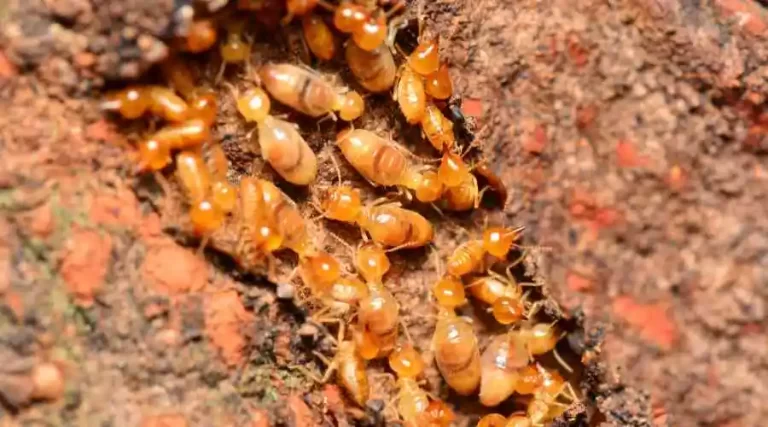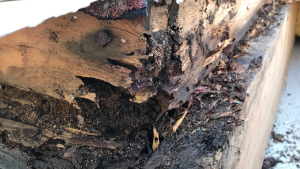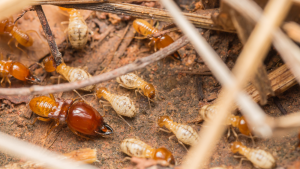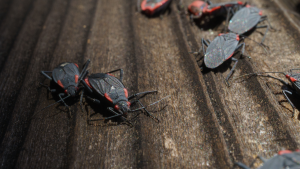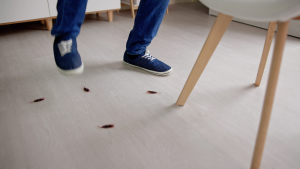At an annual cost of almost $5 billion, termites are the bug that causes the most damage to American property. We want to provide you with some information on what to check for in your home if you suspect termites in order to assist prevent your property from becoming one of that alarming number.
Termites: How Do They Look?
Of course, seeing a termite in person is the best way to determine whether there is a termite infestation. Many individuals might not be familiar with termites’ exact appearance, despite the fact that everyone has heard of them. When trying to diagnose a termite infestation on your own, there are a few major differences that you should be aware of, including:
- Termites frequently have a lighter hue than ants, ranging from a creamy white to a brownish shade, as opposed to the darker browns and blacks that are typical of ants.
- Size: Termites typically range in length from 1/8 to 1 inch. The queen of a colony, who may grow up to 6 inches in size with her enormous belly, is obviously much larger than this caste of termites, which is the most frequent.
- The most obvious variation is in the body type. Ants’ waists are tight, whereas termites’ waists are thick. They differ from ants in having straight antennae rather than curved ones, and they also have shorter legs.
- Wings: Although termites rarely have wings, when they do, they will have two pairs that are each the same length. The length of each pair of wings varies on the ants.
How Many Varieties Of Termites Are There?
There are over 45 different species of termites in the United States, but they typically fall into one of three groups. They are mostly classified based on how they look, where they build their nests, and how they behave. Termites come in three main categories.
Deep-sea termites
Subterranean termites are the most prevalent type of termite and are found throughout the U.S. continent. As the largest nest builders of all termite species, they are the main culprits for harming buildings and other structures. To get to their food source—the delicious wood of your home—these termites will dig mud tubes beneath your yard.
Termites in wood
According to their name, dry wood termites prefer to live inside dead or decaying dry wood, such as dead trees, structural beams, or solid hardwood flooring. You should keep an eye out for them near your property because they will go to great lengths to avoid soil. Fortunately, they typically have smaller colonies than their underground cousins, which means that overall, they do harm at a slower rate. They are typically larger than their underground cousins. They still pose a serious threat to your home, of course, so this does not mean they are not present.
the Formosan termites
Unquestionably the most dangerous termite species are Formosan ones. Given the distance between their nest and their food source, they are quite challenging to get rid of once they are established. They can also establish temporary residences in regions with abundant food, like as your home, but the main nest will still be there even if you remove any nests there.
What About Termites’ Wings?
Indeed, termites do have wings, is the obvious response. It’s vital to keep in mind that only a few castes of termites in the colony have wings, and even then, they can only fly during particular times of the year. Alate nymphs, or termite swarmers, are the only caste of termites with wings in a colony.
Characteristics of a Termite Infestation
Fortunately, considering how much damage termites can do, if you know what to look for, it’s not difficult to identify early warning signs of a serious infestation. These are some of the most typical indications of a termite infestation:
- Perhaps you can hear it when you walk over the hollowed-out wood.
- Wooden floor blisters: They appear as little bubbles on your floor.
- These will resemble coffee grounds and may be called pellets or droppings.
- Its bodies or wings are around the size of ants.
- Mud tubes are the tubing that you could discover outside or in your crawlspace.
How dangerous are termites to people?
Despite the fact that termites could seriously harm your house, they don’t pose much of a threat to you or your loved ones until they decide to bring the structure down on top of you. They don’t have any known contagious illnesses, and unless provoked, they don’t want to bite or sting people.
What Brings Termites to My Home?
A food source is what termites are primarily searching for, as is the case with many insects. Homes seem particularly delicious to them because their main food source is wood, so they may be able to see through walls. Moisture is another thing that termites enjoy. Check the home for moisture in the wood, wet areas, and any outside cracks. The spring, early summer, and fall seasons are the times of the year when termites are most likely to invade. It is understandable why the south is the United States’ termite hotspot when you combine the heat and humidity.
A Guide to Termite Prevention
Termite prevention is usually preferred to termite extermination, and it will end up being far less expensive overall. Top termite prevention advice is as follows:
- Keep outdoor vegetation—including tree branch growth—away from your house. Subterranean termites are difficult to transfer from your yard to your home, so make sure that no shrubbery or foliage is in direct touch with the structure.
- Keep your foundations dry. Whether your home is built on wood, concrete, crawl space, or another type of foundation, it’s important to keep them dry. You should search for any areas that continue to be damp after periods of severe rain or flash flooding to find any potential moisture problems.
- Maintain a regular cleanup of any yard waste – Be sure to keep mulch and fallen leaves away from the house. Making sure your gutters are cleaned frequently is part of this.
- While flying termites are swarming, be on the lookout for them. Since they are the breeders, it’s important to keep flying termites away from your home. If you begin to see them flying, make sure there are no openings in your house, keep your windows closed, and turn off your lights at night.
Termite Removal Procedure
If you’ve read this far, it’s probable that you are well-versed in the subject and are merely interested in learning how to drive those annoying termites out of your house. There are some things you can do on your own, though we obviously advise hiring a professional, especially because the house may already have significant termite damage.
- Termite removal products are widely available, and despite their varying levels of efficacy, they all aid in the elimination of termites. Spot treatments and bait treatments are your two basic product choices.
- Beneficial nematodes – These tiny roundworms, which are termite parasites and may kill termites in a matter of days, offer a more organic solution to the problem.
- Neem oil and orange oil are two examples of essential oils that can assist in killing termites in a number of ways, including by preventing their egg-laying or interfering with their shedding cycle.
- Since it completely shuts down the termites’ system, boric acid is a well-known way for destroying them.
I hope you now know how to spot termites and defend your house from a termite invasion. For all of your termite removal requirements, we always advise calling the experts at vista-pest-control.com.

